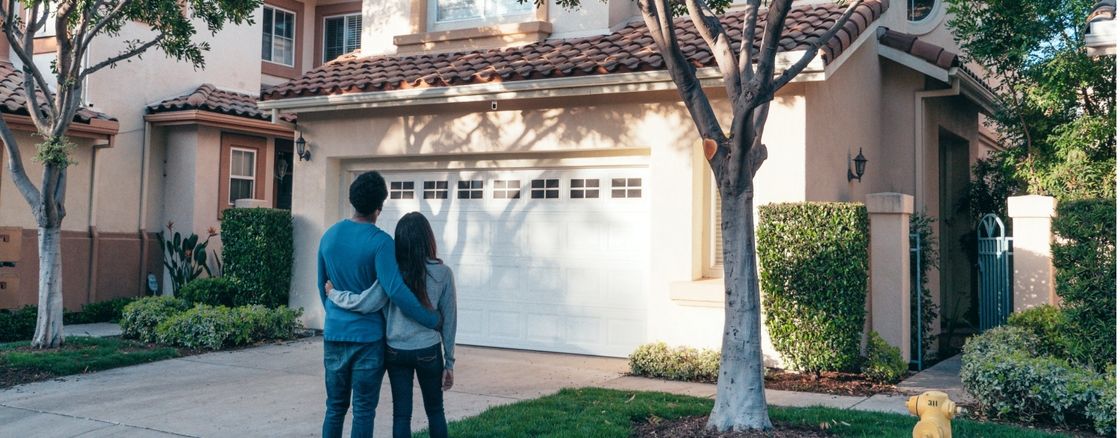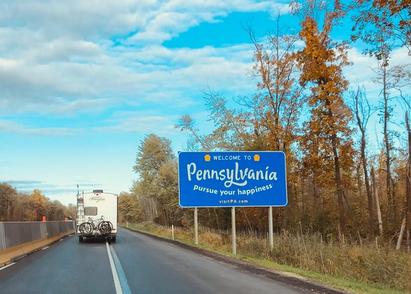Breaking Barriers: Accessing Down Payment Assistance Programs for First-Time Homebuyers
Written by:
Ashley Altus
Ashley Altus
Certified Financial Counselor
Ashley Altus is a writer and certified financial counselor through the National Association of Certified Credit Counselors.
See full bio
Fact Checked by:
Mike Tassone
Mike is a Co-Founder and Chief Operating Officer of Own Up. He has expertise in all areas of residential lending, having led operations for a top 40 lender in the United States.
See full bio

Fast Links
- What are Down Payment Assistance Programs (DPA Programs)?
- How to Know if You’re Eligible for Down Payment Assistance
- How to Access Down Payment Assistance Programs
- Types of Down Payment Assistance Programs
- Where to Find Down Payment Assistance Programs
- Is a Down Payment Assistance Program Right for You?
- 3 Benefits of a Down Payment Assistance Program
- Three Disadvantages of Using Down Payment Assistance Programs
- The Bottom Line
One of the biggest hurdles to achieving homeownership is the down payment, or the amount that you as the prospective homebuyer need to have saved to purchase your home.
Conventional wisdom says you need 20% of a home’s purchase price for a down payment, but that's actually not typical for most people. According to Realtor.com, the homebuyer down payment in the United States only averaged 13% of a home's sales price in 2013.
If you’re ready to make the transition from renter to homeowner, don’t let a down payment be a barrier to homeownership. There are a lot of different types of payment options available for qualified homebuyers. As a first-time homebuyer, you may even qualify for help through a down payment assistance program.
Taking advantage of federal, state, and local down payment assistance programs can help make your housing dreams a reality. This article will explain what they are and also dive into the various types of payment assistance options out there.
What are Down Payment Assistance Programs (DPA Programs)?
Down payment assistance programs provide loans or grants to eligible home buyers to help them finance a down payment or pay for closing costs during the home-buying process. Depending on the type of assistance, the funds may partially or entirely cover a down payment for a mortgage loan.
How to Know if You’re Eligible for Down Payment Assistance
Every down payment assistance program has its own specific eligibility requirements. Programs may consider an applicant’s household income, credit score, mortgage lender, debt-to-income ratio, and geographic location. In general, most down payment assistance programs aim to assist low- and moderate-income families become first-time buyers.
How to Access Down Payment Assistance Programs
If you’re interested in financing a mortgage down payment, a database like the Down Payment Resource (a resource that aggregates homebuyer and down payment assistance programs across the country) could be a place to start your search. You can also ask your loan officer, real estate agent, or HUD-approved housing counselor, as they may be familiar with homeownership programs in your area.
Once you find a financial assistance program for which you think you may qualify, you’ll fill out an application. If you find more than one mortgage program that may suit you, you will have to apply to each of them individually, as there isn’t a single common application. After filling out the application, some programs will require you to take a homebuyer education class or earn a buyer education certificate.
Types of Down Payment Assistance Programs
Are down payment assistance programs free money or zero-interest loans? Well, they aren't exactly either. However, the benefits and cost savings will depend on the type of payment program. There are four common forms of down payment assistance programs you’ll encounter:
1. Grant Programs
Think of grants as gifted funds. Traditionally, funds from a grant program don’t need to be repaid, but some may come with certain requirements – for both the borrower and the lender. These payment assistance grant programs are limited and may have stricter income limits compared to other types of assistance programs.
2. Forgivable Loans
After a set period of time, these loan types can be forgiven, meaning you won’t have to pay them back. However, they will have requirements you need to follow for the loan to be forgivable, like staying in a home for a certain number of years. They may also have restrictions on using the home as an investment property.
3. Deferred Payment Loans
These zero-interest, deferred-payment loans can be used to cover a down payment, and are also referred to as a soft second mortgage. Unless or until you sell the home or refinance the loan, you won’t have to make payments on this second mortgage. Some programs that offer deferred loans are forgivable after a certain period and under certain conditions, for example, if you stay in the home for a set period of time.
4. Second Mortgages
Think of this as taking out a mortgage to cover the down payment and closing costs. Because this is a true second mortgage, you will need to repay these loans completely as you would with a conventional mortgage. You may see your local government agency refer to these as DAP loans.
Where to Find Down Payment Assistance Programs
Here are several examples of places you should look for down payment assistance programs. Some of them may be right in your own backyard.
Federal Programs
Currently, the federal government doesn’t offer a standalone down payment assistance program. Instead, the U.S. Department of Housing and Urban Development gives state and city governments money to distribute to eligible buyers.
However, government-backed home loans like FHA loans, VA loans, and USDA loans can give eligible homebuyers access to lower down payments and closing costs. The costs will depend on the mortgage type.
For example, with an FHA loan, a down payment can be 3.5% of the home’s purchase price. These low-interest loans work similarly to a conventional loan. A VA loan, which is available to military personnel, actually doesn’t require a down payment at all; however, all VA borrowers are required to pay a borrowing fee, and the size of the down payment will impact the amount of the fee.
State Programs
While most states offer some type of down payment assistance programs, the requirements for the programs and types of funds you can receive will differ. Here are some examples:
Illinois
The Illinois Housing Department Authority offers $6,000 in forgivable assistance that can be used for down payment and/or closing costs with eligible borrowers. The payment assistance loan is forgiven after 5 years, and the borrower isn't required to make any monthly payments.
California
In California, there are a handful of programs available for potential homebuyers, such as the Golden State Finance Authority Platinum Program or OpenDoors Program. Both of these programs provide down payment and closing cost assistance. These programs are not limited to first-time home buyers, but there are certain income and other requirements.
The California Department of Veterans Affairs (CalVet) also offers loans without down payment requirements. There are also certain municipalities throughout California that may have their own down payment assistance programs.
Pennsylvania
Residents in Pennsylvania can access an interest-free loan through the Keystone Advantage Assistance Loan Program. The program has borrower requirements that state an applicant must have a minimum credit score of 660 and their liquid assets can't exceed $50,000 after closing on the loan. The money can only be used for buying closing costs or a down payment.
Check the resources available in your state’s housing finance authority for home buyer programs.
Local Programs
The majority of down payment assistance programs are right in your own backyard. Many city and county governments encourage home ownership by creating homebuyer programs.
Programs by Profession
Some down payment assistance programs target individuals who hold certain jobs or work in specific industries. Your locality may offer programs for teachers, firefighters, law enforcement, veterans, active military, and health care workers.
Is a Down Payment Assistance Program Right for You?
Each program will have its own specific advantages and challenges, as everyone has their own goals and financial situation. Make sure to read the fine print of the program guidelines before making any financial decisions, so you can fully understand the requirements and contingencies. Below, you’ll find some pros and cons to help determine if a down payment assistance program will work for you.
3 Benefits of a Down Payment Assistance Program
Here are several pros to taking advantage of a down payment assistance program.
1. Finance a Home Easier
One of the most clear-cut advantages of using a down payment assistance program is that it makes home-buying more affordable. As saving for a down payment can take years for the typical homebuyer, a down payment assistance program can help alleviate some of that financial load.
2. Potentially Qualify for a More Favorable Interest Rate
Your down payment amount is a significant factor in your loan’s interest rate. With the help of a cost assistance program, you can put down a larger down payment and therefore, you may qualify for more favorable rates.
3. Pay Less for a Home
Generally, borrowers that put down a higher down payment will pay less money over the life of their loan, as they’ll have a smaller loan size from not borrowing as much. If approved for a down payment assistance program, you can put more money towards a down payment and borrow less. This may equate to lower monthly payments, depending on the type of mortgage you receive.
Three Disadvantages of Using Down Payment Assistance Programs
Here are several cons to taking advantage of a down payment assistance program.
1. You May Stretch Your Budget Too Thin
With the additional cash from a down payment assistance program, you may be able to buy a pricier home. It’s important to note that even with a larger down payment, you’ll still want to make sure you don’t overextend yourself financially and can afford your monthly payments.
2. Programs May be Limited to Certain Locations
Down payment assistance programs can vary vastly depending on your locality. Some local programs may only cover first-time buyers looking for a home within city limits or districts. It’s also important to note that some programs require you to live in the home for a certain number of years, or you may have to pay the money back.
3. Eligibility Requirements
To receive down payment assistance, you’ll need to meet certain criteria when it comes to your income, credit score, purchase price of the home, household size, and home location. It’s typical for programs to target individuals who are buying their first home, so if you already own a home, you may not qualify.
The Bottom Line
A down payment assistance program can lay the path to homeownership by helping otherwise qualified borrowers bridge the gap to afford their dream home. As buyer assistance programs can make a significant impact on your finances, they may definitely be worth it, especially for first-time home buyers. Program limits will vary depending on your local municipality, which house the majority of loan and cash grant programs.


